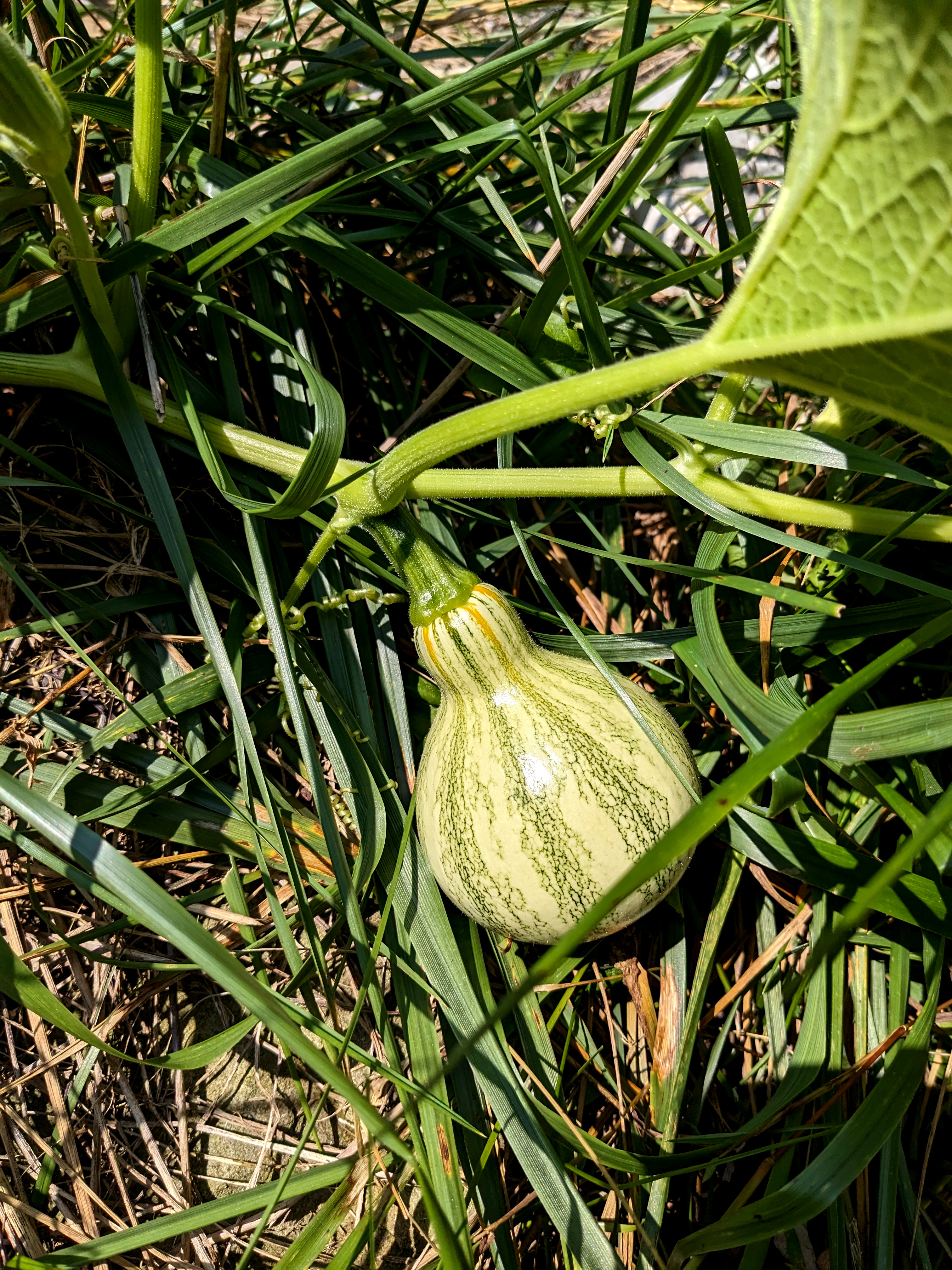Thinning
This section will focus on managing the number and density of seedlings by prioritizing exceptional plants. Remember that culled immature fruit can be eaten as summer squash.
Imitate nature with succession sowing
Wild plant species often have seeds which naturally germinate at different times. As a gardener, you can mimic nature by staggering your plantings with succession sowing. In some places with high pressure from pests, it can be useful to preemptively sow seeds every week or two during the season.
In places with less consistent pressure, you might hold back a quarter or half of your seeds for the year to plant in case your seedlings are unexpectedly eaten, or killed by weather conditions.
When to thin
Some gardeners may find that they have too many squash vines growing for the available space. If you are concerned about spacing, you may consider thinning your vines to a distance of between two and three feet apart.
Cull later rather than sooner, after 1 or 2 pairs of true leaves have appeared.
Seedlings may initially look healthy because they are nourished by their cotyledons. Their true vigor becomes apparent once they begin to metabolize their own nutrients.
Healthy seedling traits
- Sturdy thick stems, not leggy
- Uniform green leaves with no yellowing, browning, or insect damage.
- Active growth
If you have more space in another location, you might dig up the excess plants so that they can be replanted with more spacing between them. Otherwise, consider using scissors or secateurs to cut the vine just above the soil to avoid disturbing the roots of other nearby plants.
This video from Mills Family Gardening demonstrates how to separate seedlings for replanting. You might also check out this forum discussion at permies.com for experienced observations and philosophy about culling. There is no single right way.
Squash harvests begin with thinned plants
Squash plants can provide you with food even before the first fruit has matured. If you’ve been fortunate and have too many seedlings, try eating the culled plants.
Squash vine tips are clipped and used as greens in cooking. Both male and female flowers are eaten in several ways. Immature fruits can be eaten as summer squash during the season, or when frosts are in the forecast and not all fruit will reach maturity.
